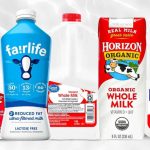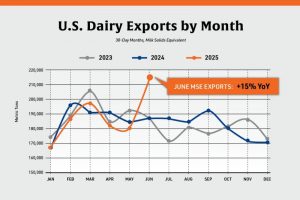
It is true that humans are the only mammals that continue to drink milk after weaning, but it is also true that they are the only species capable of elaborating preparations derived from it, and that they have developed an infinity of skills and technologies that other species have not, and have tripled their life expectancy, adapting, among other things, the way they feed themselves.
The spread of rumors, misleading or incomplete information, can lead people to draw conclusions based on them, causing additional stress to existing concerns, generating confusion and often resistance, when presented with the correct information, because its arrival is certainly less “effective” than the way they received the previous idea.
Disinformation weakens trust and has a negative impact on several aspects such as the quality of people’s nutrition and the perception they have of those who produce food.
Misinformation cannot be stopped, but it can be mitigated by taking the responsibility to support and disseminate consistent and objective communication, providing the community with the right tools to make good food choices.
Providing truthful information and exposing it carefully, thinking about the values of the people who will receive it, generating in them the desire and interest to know, is an efficient remedy for misinformation, which also builds trust and encourages its dissemination.
This week I came across an article in Brazil that reminded me of a myth I had heard many years ago in Argentina, when I was still far away from dairy production, but completely immersed in graphic production and flexible packaging.
A crazy theory was circulating that the colored patterns found on dairy containers indicated the number of times they had been recalled, expired and reprocessed.
The fact that the dairy truck would remove them from the points of sale free of charge, exchanging them for other “fresh” ones, contributed to this crazy trick that was “revealed” on the packages.

I tried to explain to the person who told me, impressed, this “secret to plans”, that he had to trust me, because it was my business! that those color plans on the printed packaging had nothing to do with the reprocessing of the products, but were color control tests in the production stage of the packaging itself.
Guess: Did he believe me, or was he left suspecting that my argument might be some sort of collusion between the companies?
At the time, I knew a lot about packaging and very little about the food it contained. Today, you can trust me to know about both! And this anecdote, which provides an opportunity to demystify one thing, also raises a concern about the other:
Is it true that expired dairy is reprocessed?
The answer is no. Dairy products that are not sold before the expiration date are discarded.
Reprocessing expired dairy could compromise the safety and quality of the product, and the dairy industry follows strict regulations that ensure consumers receive a safe, quality food produced under high standards of hygiene before, during and after processing.
Have you ever looked at the milk carton while preparing your breakfast? Consuming dairy products is good for you. Have no doubt about it.























